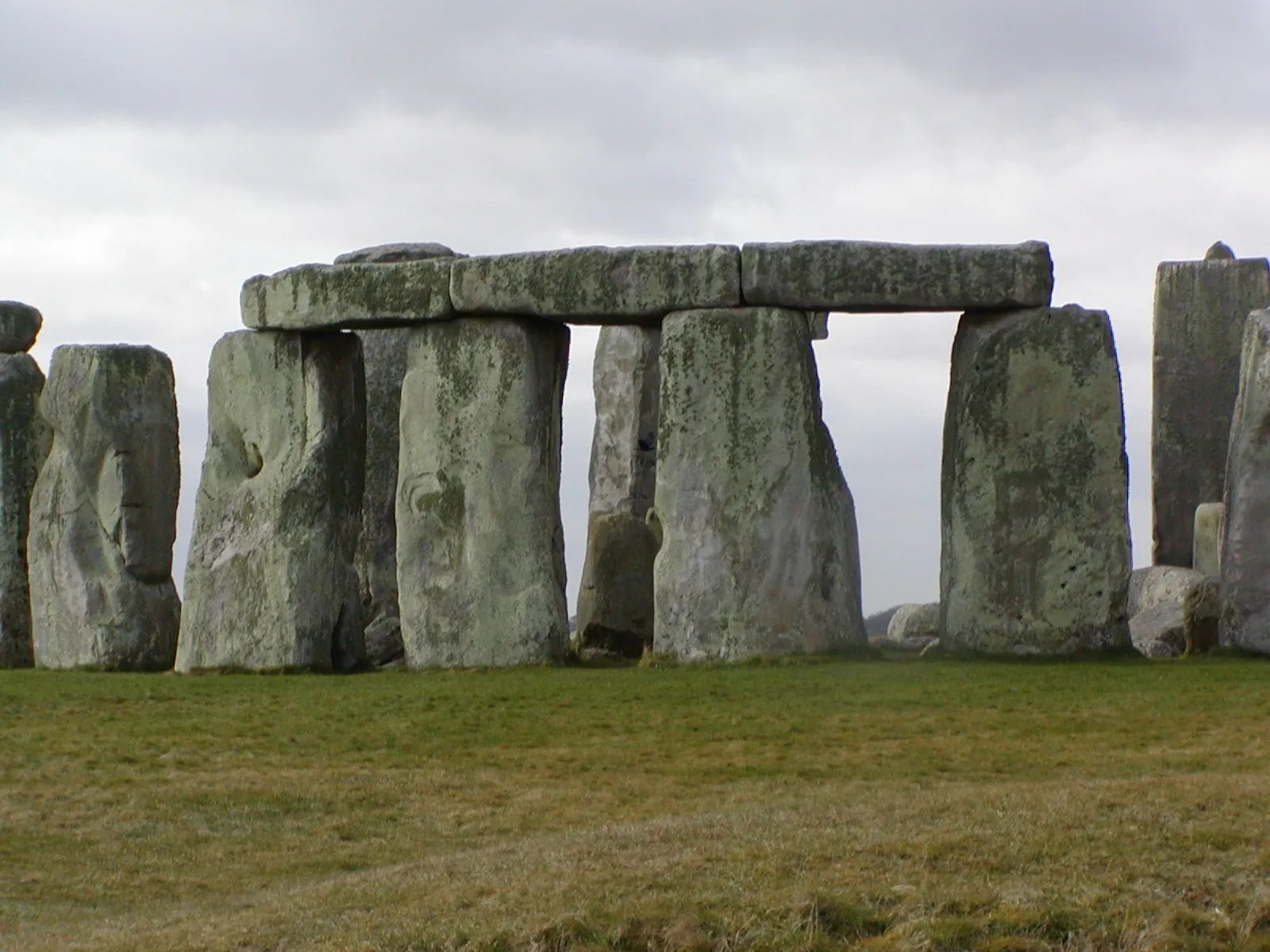
Weekly Gem #157 Puzzling stonework from millennia past
Published 4/7/2018
Location: This hidden gem is Stonehenge, just west of Amesbury, England (see the Clue Me! Map). Many aspects of Stonehenge are puzzling, not least being the transport and precise positioning of such large stones some 5,000 years ago.
When in its 'pristine' state, Stonehenge's stone circle was a complete circle, with 25 ton stones equally spaced around the circumference, other massive stones placed on top to create a series of "arches," and additional stones precisely positioned inside and outside this ring. The orientation of internal stones aligned with sunrise on the summer solstice and sunset on the winter solstice. Some of these stones are about 1/4 buried, and the amount of each stone that was underground was just enough so that the tops were all level and at the same height. If you've ever planted a 25 ton rock, or even a 100 pound rock, imagine your reaction to ... "That's too far. Raise it about 3 inches, and a little to the left." They must have had a very impressive system of measuring, digging, and placing, so they didn't have to lift the rock and back fill.
Then there was the "henge," which is a circular ditch next to a circular berm (roughly 15 feet tall and 25 feet across). Earth was removed from the ditch to form the berm. The stone circle is exactly in the center of the circular berm.
A bit of trivia: Stonehenge is not considered to be a henge, because the ditch is on the outside of the berm, whereas a true henge has the ditch on the inside. Someone may have lost their job over that one!
A final piece that remains a puzzle was the transport of the stones. Why those stones? And how did they get them from there to here?
The largest stones were unearthed nearly 20 miles away and manhandled to their present location. This impressive feat triggered the earliest recorded case of one-upmanship ... the guy in charge of the central stones, not to be outdone, decided to get them in Wales. He gathered his "small" (4-5 ton) bluestones in a place called Carngoedog (just up the hill from Eglwyswrew ... ). He hauled them down to the north coast of Wales, ferried them by sea to the vicinity of present-day Bristol, then carted them overland for the final 50 mile leg of their journey. Nicely done!
Eglwyswrew.
Stonehenge becomes even more remarkable when you realize it was all accomplished without a single shovel, the site being constructed and reconstructed and remodeled several times over about 1000 years during the stone age.
Eglwyswrew.
.........
Here's the hidden gem entry from our Clue Me! map.
Clue
A tight fit
Description
Closely packed stones at Stonehenge
Why It's Interesting
It's hard to imagine how these stones were assembled 5000 years ago, not just their precise positioning in a perfect circle, but the horizontal stones that capped the 'arches' had to be partially buried, just so, to even everything up. Quite a day's work.















